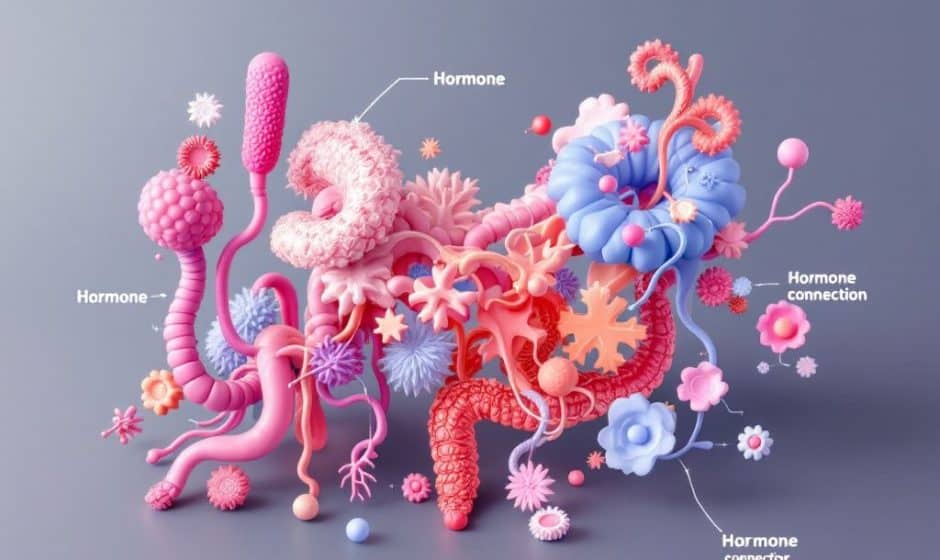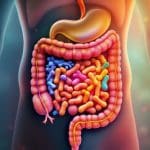Hey there! Have you ever had one of those days when your belly won’t quit gurgling, or when your mind is a foggy mess? If you’ve found yourself here, you might be wrestling with some gut issues and their surprising link to hormones. Let’s dive into unmasking this relationship—because trust me, your gut and hormones are chatting away even as we speak.
What Exactly is Leaky Gut?
Before we unravel the hormone enigma, let’s resolve what a “leaky gut” is. Imagine your digestive system as a vigilant gatekeeper, controlling what gets into your bloodstream. Now, when this gatekeeper gets a bit lazy or tired, things slip through. That’s what’s known in scientific circles as increased intestinal permeability, commonly termed as leaky gut.
Symptoms to Identify
You might be wondering, “Is this what’s bugging me?” Here are some symptoms that can give it away:
- Digestive issues: Pain, bloating, gas—oh my!
- Brain fog: Instead of clear thought processes, imagine misty mental trails.
- Fatigue: When a short stroll feels like a marathon.
- Skin issues: Breakouts, redness, and itchiness popping up like little “surprise!” gifts.
Hormones and Your Gut: The Unlikely Duo

Alright, so here’s the scoop. Hormone regulation isn’t something we usually associate with eating, yet what’s swimming around in your gut plays a massive role in harmonizing those pesky hormones.
The Gut-Hormone Axis
You’ve likely heard of the gut-brain axis by now, but what about the gut-hormone axis? It’s a network of exchanges—where hormone production impacts gut health and vice versa. For instance, the stress hormone cortisol can wreak havoc on your gut lining, making it leakier. Fun, right? Not really.
This relationship is adept at amplifying fun or stress through neurotransmitters and hormones. Picture this—your gut bacteria chat with your hormone producing glands 24/7. When all’s well, it’s like a jazz orchestra: synchronized and melodious. But when balance tips, chaos ensues.
Fueling Your Gut to Fuel Happy Hormones
Alright, repairs are needed. Let’s explore how to fortify that gut of yours!
Eat to Heal
Nature’s bounty can lend a hand. Reach for real foods packed with nourishment. Processed ones just add more confusion to your gut’s hectic world.

- Fermented Foods: Sauerkraut, yogurt, kefir—tangy sidekicks rich in probiotics make your gut smile.
- Fiber-Rich Foods: Beans, oats, and veggies act like a broom, sweeping out toxins.
- Healthy Fats: Think avocados, nuts, and fish. Fats give your membranes elasticity, essential for plugging leaks.
Burst Stress Bubbles
Ever notice how deadlines seem to fast track your digestive failures? That’s stress—tightening muscles, elevating cortisol, and damaging your stomach. Learning to counter stress through mindfulness or light exercise, even gentle yoga, lets your digestion and hormones dance a smoother rhythm.
Wanna Give This a Try? Intermittent Fasting
A common misconception is more eating gives more energy, but here’s a little secret worth trying—intermittent fasting. It might just give your gastro system the break it deserves, turning repairs into a priority while also assisting with hormone regulation.
Supplement Wisely
Engaging with natural supplements can push much-needed support:
- L-glutamine: Like an epoxied seal for gut lining hiccups!
- Zinc: Boosts immune defenses; a walkie-talkie calling in reinforcements.
- Omega-3s: Soothes by snapping inflammation back into standby mode.
Common Mistakes on the Healing Path

No saga is complete without pitfalls, right? Let’s steer clear of them where we can:
- Ignoring Sleep: Less sleep means more stress means more hormonal imbalance. Yes, it’s that simple.
- Overpowering Workloads: Don’t stack the deck against your well-being; chip away slowly.
- Eating in Chaos: Multi-tasking is out; mindful eating is in. Taste, chew, savor.
How to Recognize Improvements
Ah, finally! Let’s track those little victories that confirm you’re on the right path:
- Better Digestion: Less discomfort, more happy meals!
- Boosted Spirits: An elevated mood that just doesn’t quit.
- Glowing Skin: Radiance as your complexion sings in harmony.
- Increased Energy: More days that start with a zing and not a yawning stretch
Wrapping Things Up
We’ve waded through a wealth of info, haven’t we? Hopefully, your toolbox is ready, brimming with insights on treating your gut right for optimum hormone regulation. It’s a process where gradual shifts, in both diet and lifestyle, bring the full circle of healing back to you. So, give it a try…and remember, trust this process!
Frequently Asked Questions
What causes a hormonal imbalance?
A hormonal imbalance can be caused by natural changes or stages in your life, including puberty, pregnancy, perimenopause, and menopause. Additionally, hormone levels can dramatically decrease after a partial or full hysterectomy. Other factors such as tumors, adenomas, and autoimmune diseases can also lead to hormonal imbalances[1][5].
What are the signs and symptoms of a hormonal imbalance?
The signs and symptoms of a hormonal imbalance can vary widely but may include irritability and fatigue, mood swings and depression, skin dryness and loss of elasticity, water retention and weight gain, osteoporosis and joint pain, less interest in sex, insomnia and other sleep disorders, and memory issues and difficulty concentrating[1][5].
How does hormone replacement therapy help with hormonal imbalances?
Hormone replacement therapy helps by restoring stable hormone levels in the body, which can improve sleep, increase energy, enhance memory, improve concentration and focus, elevate mood, smooth and hydrate the skin, increase interest in sex, regulate weight and reduce water retention, and protect joints and bones[1][3].
What are the different types of hormone therapy available?
There are several types of hormone therapy, including systemic hormone therapy (available in pill form, patches, rings, gel, cream, or spray), low-dose vaginal products (for vaginal and urinary symptoms), and bio-identical hormone replacement therapy (which mimics the structure of human hormones and may have fewer side effects)[1][3].
References



